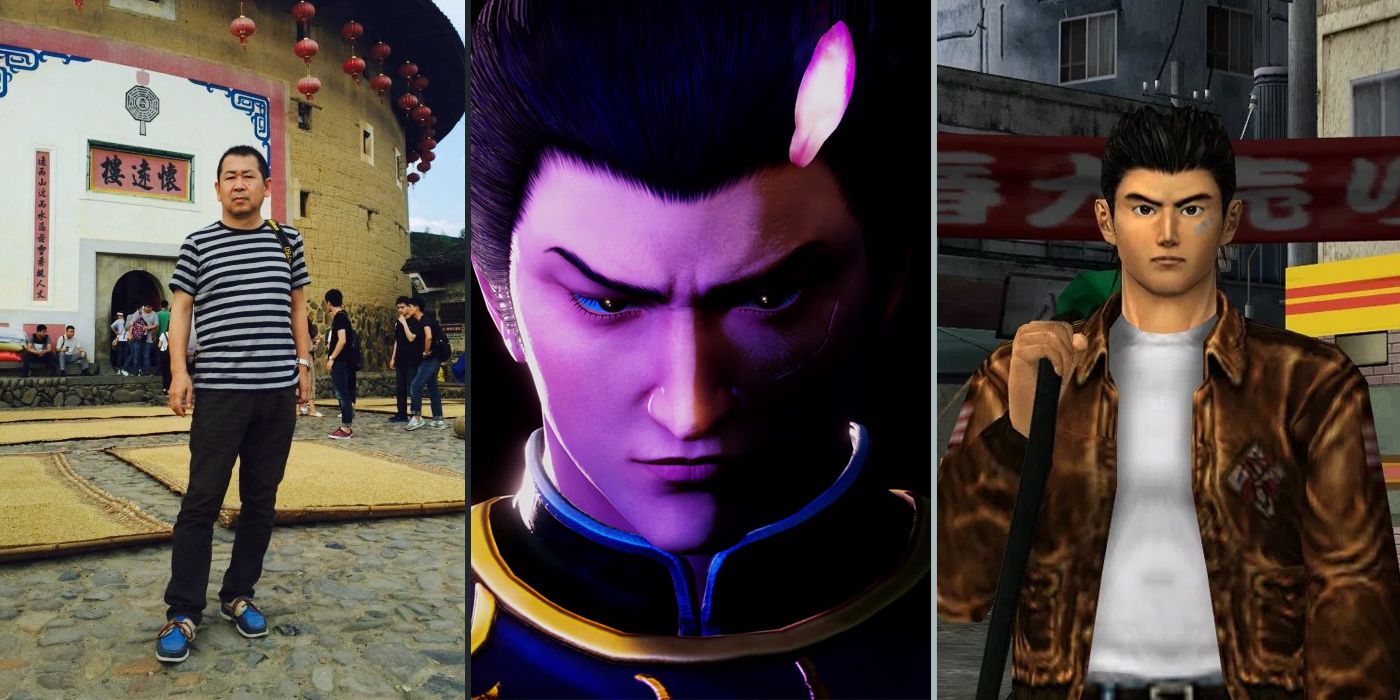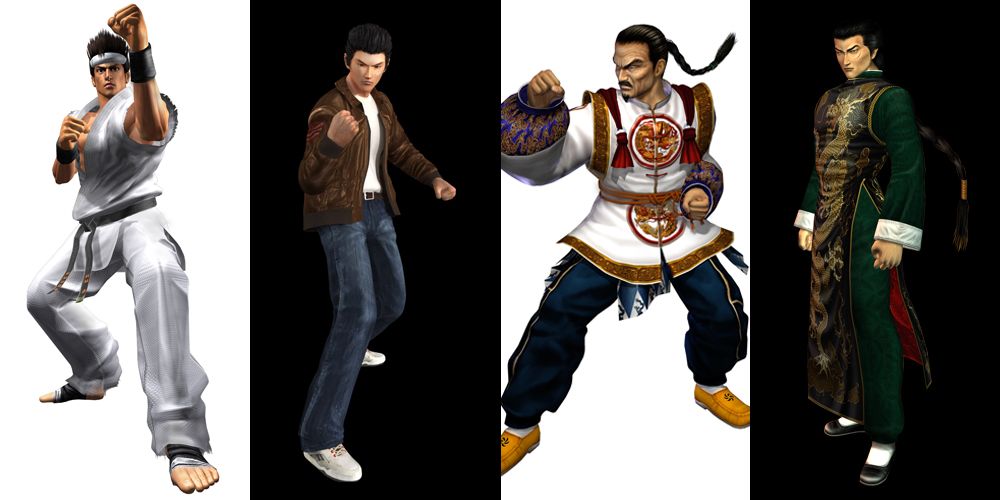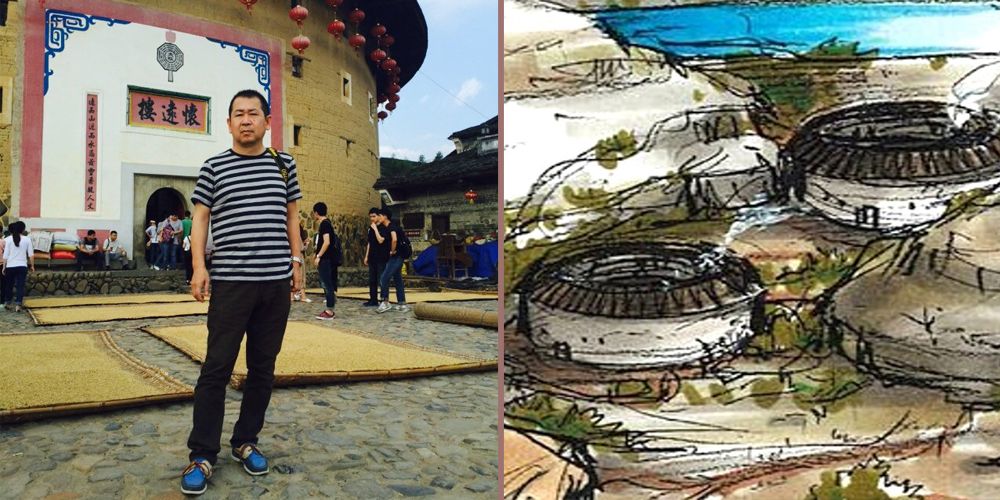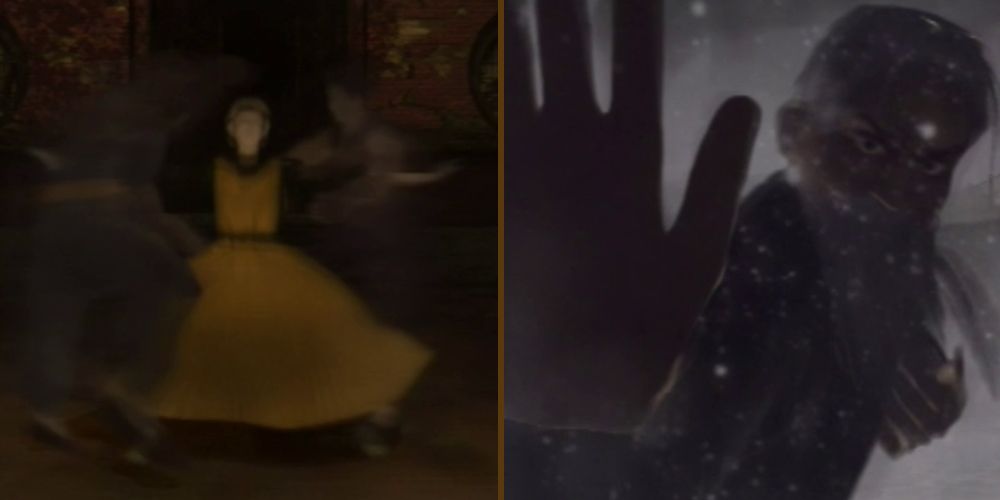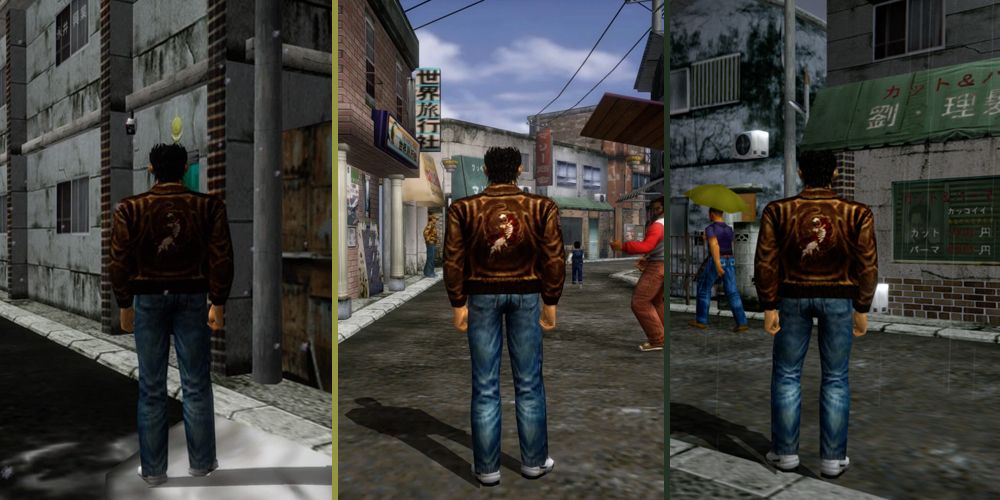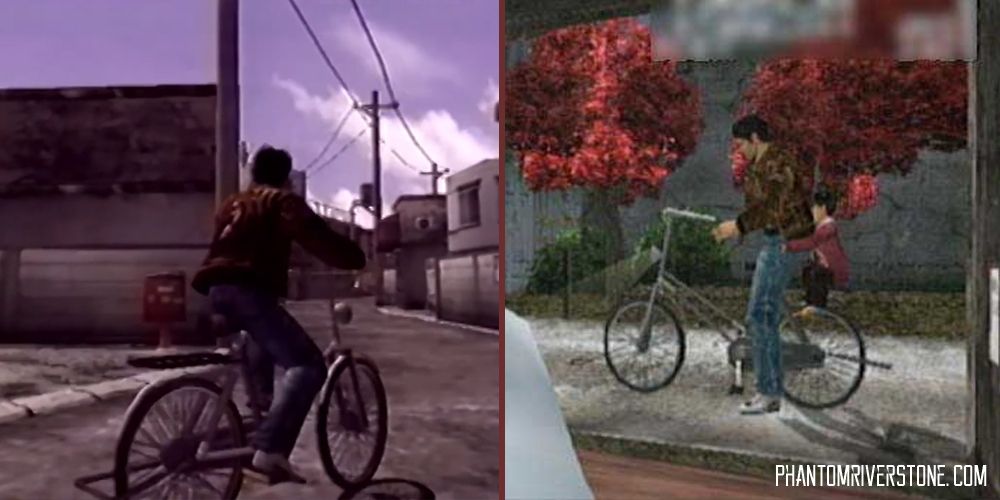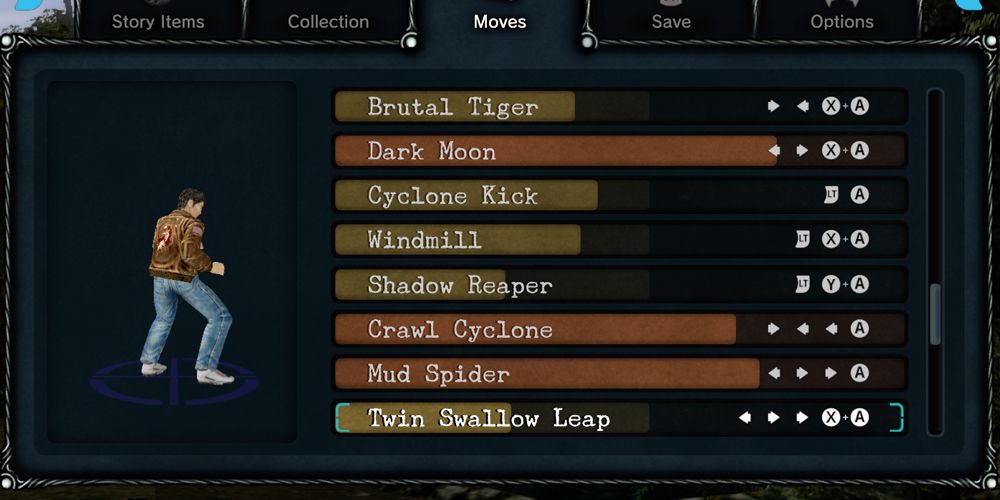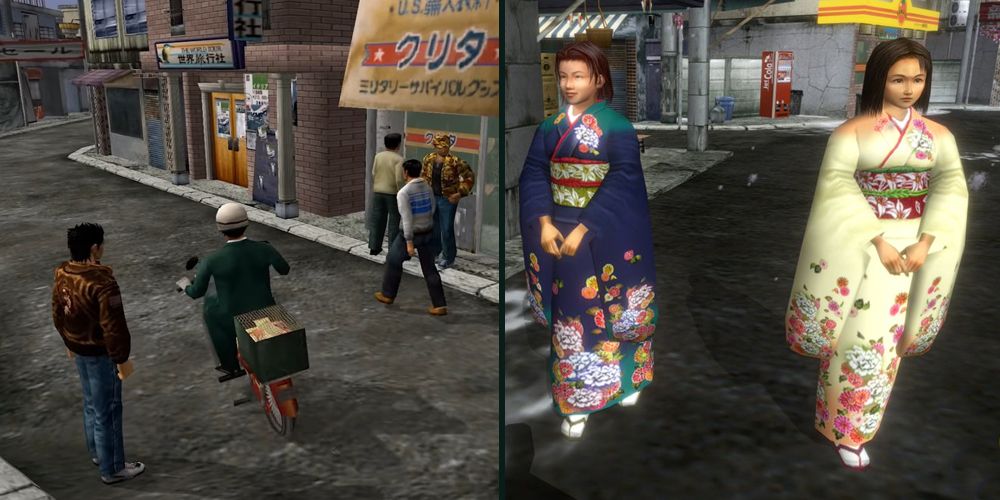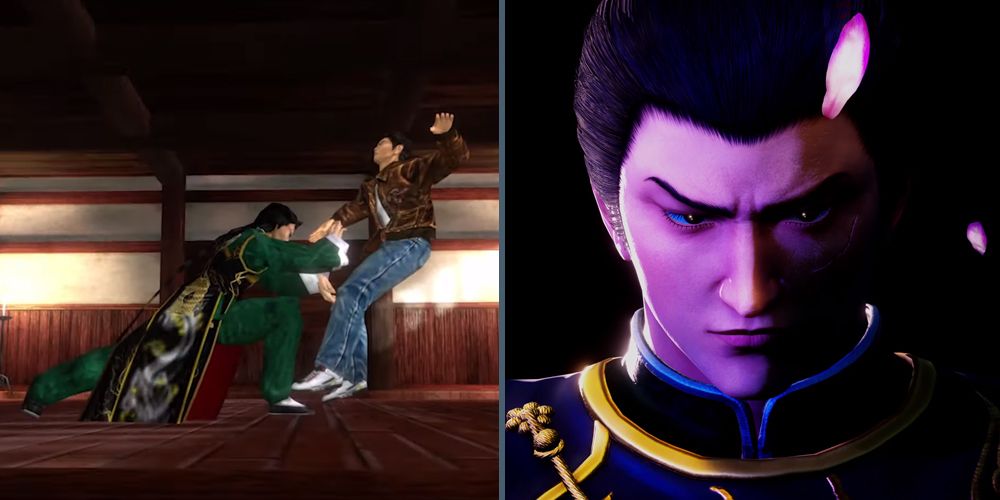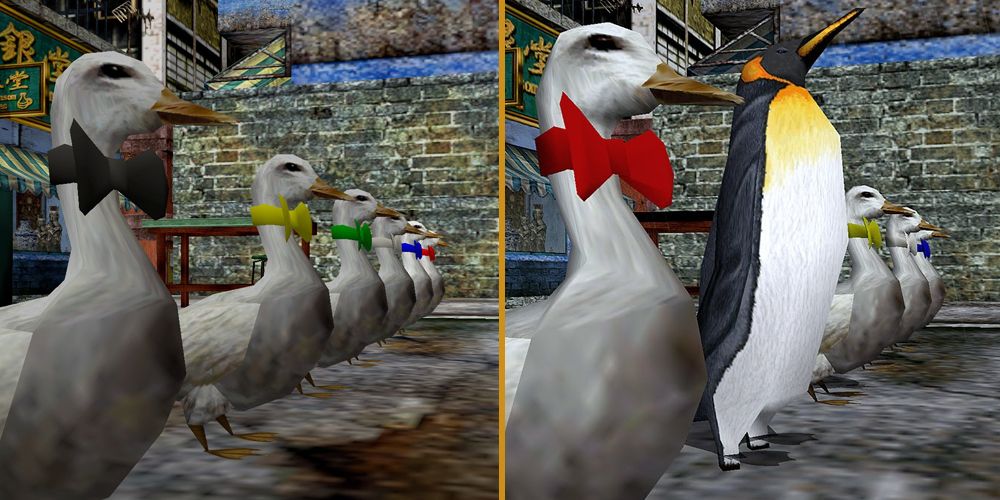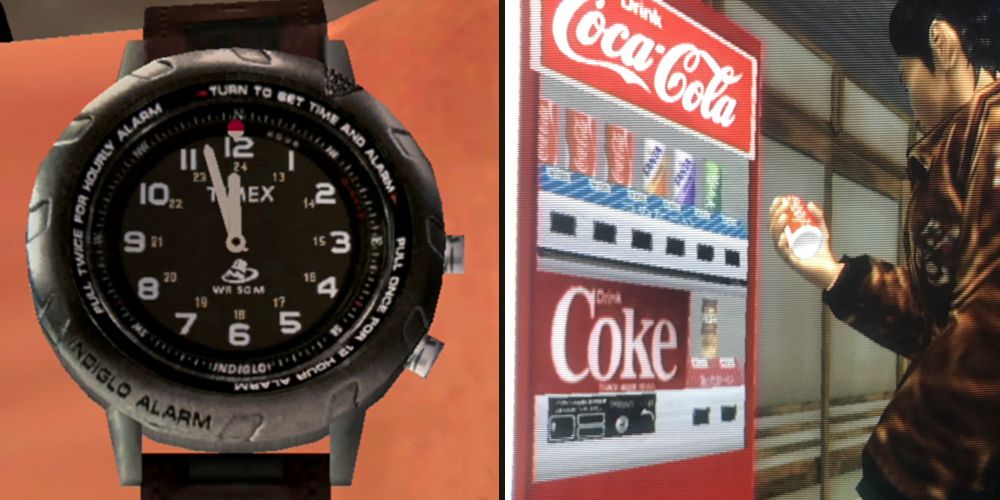At the time of its release, Shenmue was the most expensive game ever made. The exact budget varies depending on who's to be believed, but it's somewhere between $47m and $70m. Whatever the amount, it led to the creation of one of the most ground-breaking games ever made.
Love it or loathe it, it's hard to argue that Shenmue was not a game ahead of its time. It featured numerous elements that would not become standard in video games for years to come and popularized a number of gameplay mechanics that would go on to feature in some of the best selling games of all time.
As a result of the game's scale and ambition, its development was as complicated as it was expensive. Many changes were made throughout the development period and many interesting and quirky elements found their way into the series.
10 The Game Started Life As A Virtua Fighter RPG
Series creator Yu Suzuki had originally planned to make a game that told the story of Virtua Fighter's Akira Yuki. Although the idea would later go on to become Shenmue, there remain many elements from the original concept throughout the series. Ryo is still referred to as Akira in some of the game's design documents and several of the Bajiquan moves that he learns on his journey are the same moves used by Akira in the Virtua Fighter games.
It's not just Akira either. Many of the martial artists found throughout Shenmue's world share similarities with the cast of Virtua Fighter - both in terms of their appearances and their fighting styles. Lan Di's character in particular bears a strong resemblance to Virtua Fighter's Lau Chan and both characters are masters of the Tiger Swallow fighting style.
9 Yu Suzuki Travelled To China To Research The Game
In 1994, Yu Suzuki travelled to China in order to conduct additional research for his Virtua Fighter RPG. The aim of the trip was to further study the Bajiquan fighting style and to research potential locations for the game. In total, the trip lasted around two weeks with Suzuki visiting five or six different areas of the country.
Many of the locations visited are locations that are yet to appear in the Shenmue series, leading fans to believe that Xi'an, Shanghai and Beijing would be amongst the areas to feature in future Shenmue games. This was later confirmed by Yu Suzuki in a postmortem presentation at the 2014 Game Developer's Conference.
8 Development Of Shenmue Began On The Saturn
Work on the Shenmue series began way back in 1996. Back then however, it was known instead as 'Project Berkley' and was in development for the Sega Saturn. Development on the Saturn would continue for several years before Yu Suzuki eventually made the decision to switch development to the more powerful Dreamcast.
A video showcasing the Saturn build of Shenmue was included in Shenmue 2 as an unlockable bonus. Many fans were surprised to see just how far into development the project had been - with the footage covering events from the first two Shenmue games as well as some that are still to occur. It's therefore possible that some of these scenes may even follow the events of 2019's Shenmue 3.
7 The Game Uses Real Life Weather Records
Yu Suzuki is known for his meticulous attention to detail and there are various examples of this scattered throughout Shenmue's development. All of the game's NPCs were given blood-types and full bios, for example, and nearly every item in the game can be interacted with. One of the more extravagant examples of this though came through the game's weather system.
Suzuki had his team track down real world weather records for the Yokosuka area during the period in which the game is set. Although the weather is set to random by default, players are able to switch to real world weather if a completed save file is present on the system's storage. In the HD rerelease, it appears that the 'random' weather setting also uses these records.
6 A Bicycle Was Originally Planned To Be In The Game
During early development, Yu Suzuki had planned to include a bicycle that would allow Ryo to travel around Yokosuka much more quickly. After experimenting with the mechanic however, Suzuki felt that the bicycle made the game's map feel too small and so removed it from the game.
The idea was later revisited during the development of Shenmue 2, as shown by a screenshot of Ryo on a bicycle in the South Carmain Quarter area of the game that was released by AM2. Presumably for the same reasons though, the bicycle was once again cut.
5 Move Animations Change Through Training
Shenmue used state of the art motion capture technology in order to create animations for the game's martial arts moves. What most players probably don't realize though is that many of these moves have a second animation. In order to unlock them, players need to train and master the moves. Upon doing so, Ryo's execution of the moves will improve and this will be reflected through a new animation.
Interestingly, these animations revert back to their original forms at the beginning of Shenmue 2 even if the player has a completed save-file from the first game. Why exactly this is the case remains unclear, but given that both games use the same combat engine, it seems to have been a conscious choice on the part of the development team.
4 Each NPC Has Their Own Daily Schedule
A massive amount of work was put into making Shenmue's world feel authentic. Whilst much of this came through the game's cutting edge graphics, the game's NPCs also received a lot of attention. Shenmue was one of the first games to feature a fully-voiced cast of NPCs and they were all given given their own backstories.
What many people don't realize though is that each of the game's NPCs also has their own unique schedule. The schedules vary from day to day and account for things like weekends and holidays. Characters go to work, go for lunch and even hang out with their friends. Some also have seasonal outfits that they wear on particular occasions like Christmas and New Year.
3 All Three Games Have Time Limits
For a series which encourages the player to explore, a time limit may perhaps seem a little counterintuitive. In truth though, it's incredibly unlikely that players will ever run out of time due to the huge amount that's provided. In the first Shenmue game, players have until April 15th to complete the story. At this point, Lan Di will return to Yokosuka, kill Ryo and take the Phoenix mirror.
The idea of including a bad ending carried over into the second and third titles too. In both Shenmue 2 and Shenmue 3, a bad ending will occur on July 31st. The games do warn players before the bad endings occur - but even players taking their sweet time should finish the games long before the warnings, let alone the bad endings themselves.
2 There's A Secret Duck Racing Minigame
It's not the easiest thing to unlock, but if players are willing to jump through a few hoops, it's possible to gain access to a secret duck race during the Hong Kong section of Shenmue 2. After beating the minigame and obtaining the gold medal, Ryo can even find and race with his own duck. Beating it multiple times will unlock a penguin.
In order to unlock the minigame, players must first defeat Izumi and Eileen to obtain the bronze and silver medals. After doing so, Izumi will take Ryo to the Wise Men's Quarter and show him the duck racing area. Initially, Ryo is only able to bet on the ducks, but after obtaining his own, the player will be able to control it during races.
1 The Game Features Product Placement
Ryo's Timex watch is the most obvious example of product placement in the Shenmue series, but there are several others scattered throughout the first game. Due to licensing issues however, many of them were not included in the Western release. Furthermore, Sega removed all instances of product placement from the HD rereleases - likely due to the original licensing agreements having expired.
The North American release of Shenmue features 'Bell Wood's' branded vending machines, but in the Japanese release they are Coca Cola branded and contain cans of Coke and Fanta rather than the generic drinks found in the West. It's also possible to find Glenfiddich whiskey in several of Dobuita's bars and Ryo's bank book is issued by the Japanese bank Sumitomo.

